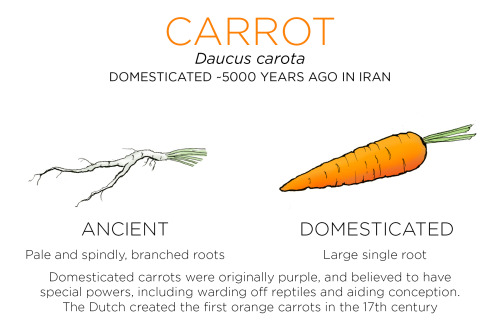After The Devastating Earthquake In Amatrice, Italy, On August 24th, The Vigili Del Fuoco (Italian Fire

After the devastating earthquake in Amatrice, Italy, on August 24th, the Vigili del Fuoco (Italian fire brigade) requested assistance from the TRADR (Long-Term Human-Robot Teaming for Robot-Assisted Disaster Response) project (EU FP7 framework, grant No. 60963). TRADR deployed two Unmanned Ground Vehicles (UGVs) and three Unmanned Aerial Vehicles (UAVs) to assist the post-earthquake response in Amatrice.
The task was to use robots to provide 3D textured models of two churches, San Francesco and Sant’ Agostino, national heritage monuments from the XIVth century. Both were in a state of partial collapse and in need of shoring to prevent potential further destruction. The models should serve to plan the shoring operations and to assess the state of various objects of cultural value inside the churches, such as valuable frescos.
The UGVs successfully entered the San Francesco church, teleoperated entirely out of line of sight and partially in collaboration. For part of the mission, one UGV provided a view of the other one to enable maneuvering in very constrained space with low connection bandwidth. One of the UGVs operated in the church continuously for four hours. A UAV was also present for a short time in parallel and provided additional views of the UGVs.
More Posts from Stubborn-turtle-blog and Others







Thousands of years of human breeding transformed wild species into the domesticated varieties we enjoy every year. Most of these foods were originally found in the Americas. Some of my favorite details:
The original domesticated carrots were purple. Carrots were bred to be orange by Dutch farmers in the 17th century, and then used as a political symbol of the ruling family - the House of Orange.
The ancestors of pumpkins were mainly eaten by mastodons and giant sloths - they were too bitter for smaller animals to stomach.
Turkeys were bred to have white plumage so their skin would be more uniform in color.
Happy Thanksgiving!!

Memories of Gonder prior to Timket 2015. A traditional dancer at one of Gonder’s more famous cultural restaurants. The Tej made it all a blur but I had the presence of mind to pull out the xT1 and go up to some extreme ISO to try to make this pic. I am always inspired by Eskesta especially when done by some of the most beautiful woman on the planet… #Ethiopia #Ethiopian #EthiopianOrthodoxChurch #EthiopianOrthodoxTewahedoChurch #Timket #Timket2015 #culturaldance #Eskesta #Habesha #HabeshaCulture #PhotoToaster #fuji #fujifilm #fujixt1
The victors write history
"Lost Cities" Discovered In Libya
The Garamantes were an ancient civilization, in what is today Libya, on the African northern coast. Unfortunately for their legacy, most of what we knew about them comes from their enemies, the Romans. Unsurprisingly, the Roman accounts described the Garamantes as “barbaric nomads and troublemakers on the edge of the Roman Empire.” This view of the Garamantes as a minor, annoying tribe is being overturned by recent digs. In 2011, a team of researchers led by archaeologist David Mattingly from the University of Leicester discovered more than 100 fortified farms, towns, and villages with castle-like structures in Libya that date from 1 CE to 500 CE. The Garamantes operated a trans-Saharan trade, and were even pioneers at building oases! Hardly the “barbaric nomads” the Romans unfairly called them.
It's only coming out in German this weekend, but wow this looks cool.







Crosson Architects. Hut on Sleds. Whangapoua. New Zealand. photos: Jackie Meiring

Samantha Payne’s startup Open Bionics allows anyone in the world to download and 3D print their own bionic limbs.
Tilly was just 15 months old when she had to have her hand amputated after contracting meningitis septicaemia. Now, with a bionic arm from Open Bionics, Tilly can move all of her fingers and perform more complex movements. EMG sensors on her arm detect muscle movement, telling her bionic arm how quickly or firmly to squeeze its fingers.

Considering how much architecture can impact the way we interact with the world, it’s fascinating to look at some of the emerging schools of thought in the field
prayer circle for elder scrolls 6

-
 utot-atbp liked this · 8 years ago
utot-atbp liked this · 8 years ago -
 stubborn-turtle-blog reblogged this · 8 years ago
stubborn-turtle-blog reblogged this · 8 years ago -
 stubborn-turtle-blog liked this · 8 years ago
stubborn-turtle-blog liked this · 8 years ago -
 joan-of-shark reblogged this · 8 years ago
joan-of-shark reblogged this · 8 years ago -
 the-nuclear-chaos reblogged this · 8 years ago
the-nuclear-chaos reblogged this · 8 years ago -
 terminatedapathy reblogged this · 8 years ago
terminatedapathy reblogged this · 8 years ago -
 pubniche liked this · 8 years ago
pubniche liked this · 8 years ago -
 carman1267-blog liked this · 8 years ago
carman1267-blog liked this · 8 years ago -
 kajbern-blog liked this · 8 years ago
kajbern-blog liked this · 8 years ago -
 69ingchipmonkeys-blog reblogged this · 8 years ago
69ingchipmonkeys-blog reblogged this · 8 years ago -
 roboticsappreciationsociety reblogged this · 8 years ago
roboticsappreciationsociety reblogged this · 8 years ago
Gaming, Science, History, Feminism, and all other manners of geekery. Also a lot of dance
243 posts

